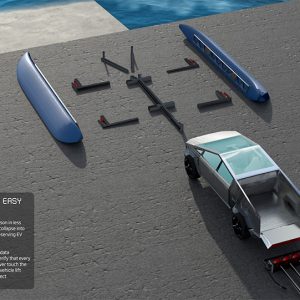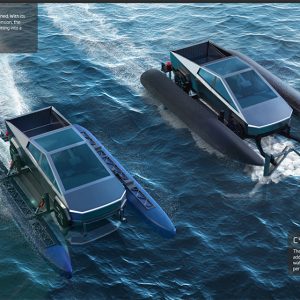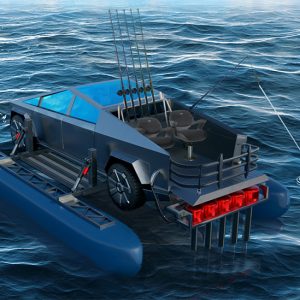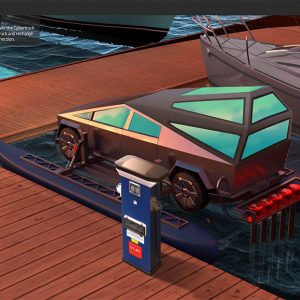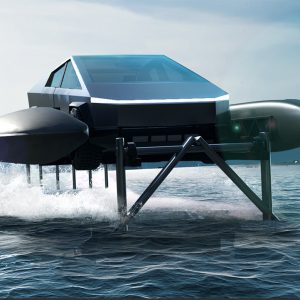Tesla Cybercat Foiler

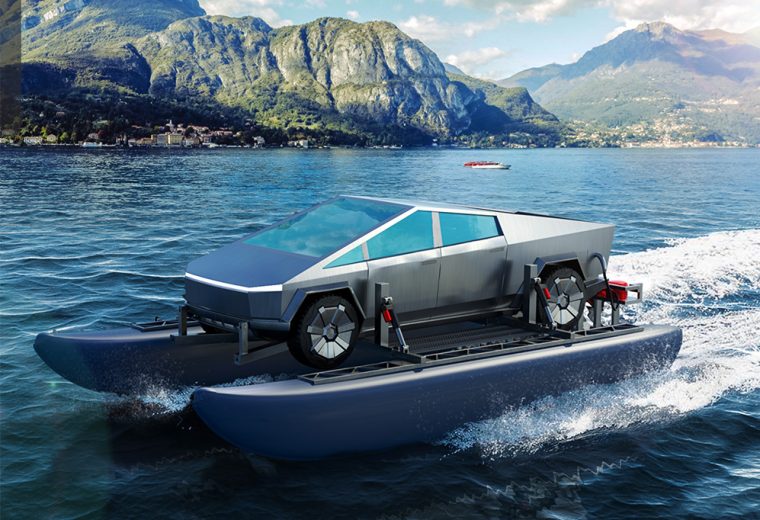
The Tesla Cybertruck is yet to be released but that hasn’t stopped engineers around the world coming up with ideas to customise it to your lifestyle. One for the boaters is the Cybercat, which turns the Cybertruck into an elite, battery-powered catamaran.
American materials scientist Anthony Diamond developed the Cybercat accessory that sees the all-electric vehicle outrigged with a pair of attachable pontoons and outboard motors. The Cybercat installation or breakdown can be done easily by one person in less time than it takes to launch a boat. Since all components of the catamaran can be collapsed into various moving parts, the pieces can be conveniently stowed away in the Cybertruck vault.
Living in the Greater Seattle Area on Puget Sound, Anthony Diamond, Ph.D. dreamed about having a way to easily and quickly hop across the water whenever he desired, that was inexpensive, didn’t require boat parking (marina mooring) and, most importantly, was clean given his background in climate tech.
As an early Cybertruck reservation holder and a Model 3 owner, Anthony was excited about tweets from Elon that indicated the Cybertruck should be able to serve as a boat for short periods. However, this capability would ultimately be limited by the speed at which wheel rotation could propel the vehicle and it would never go fast enough to be compelling.
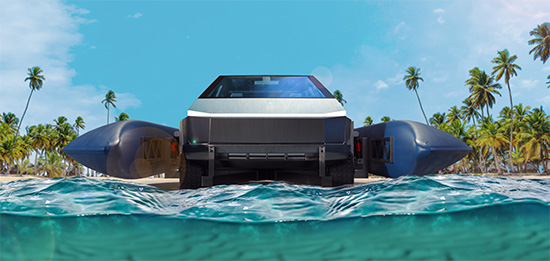 Anthony developed a concept for a portable, hydrofoiling, electric water vehicle that could collapse for storage in a bike locker. This personal watercraft would allow a user to quickly transition from crossing water to becoming a pedestrian without the need for boat parking or to carry around the vehicle’s extra weight. However, this concept was impractical and dangerous to use in winter weather. In a vehicle like a Cybertruck that could travel faster in the water, this crossing would become more feasible.
Anthony developed a concept for a portable, hydrofoiling, electric water vehicle that could collapse for storage in a bike locker. This personal watercraft would allow a user to quickly transition from crossing water to becoming a pedestrian without the need for boat parking or to carry around the vehicle’s extra weight. However, this concept was impractical and dangerous to use in winter weather. In a vehicle like a Cybertruck that could travel faster in the water, this crossing would become more feasible.
Any implementation relying on buoyancy from displacement using the submerged body of a typical road vehicle, however, would suffer from obvious problems such as corrosion, and an inability to exit the vehicle to enjoy the water as the waterline would likely be above the door openings.
Anthony realized that he could apply the core design principles from his personal watercraft concept to the Cybertruck (or any appropriately configured electric road vehicle) to quickly transform it into an all-electric high performance amphibious catamaran and the Cybercat and Cybercat Foiler were born.
A forward scanning sonar sensor integrated into the front hydrofoil will enable detection of submerged objects over 3,000 ft. away. Integration with automotive collision avoidance systems can allow the vehicle to take evasive action without user input
Clean and comparatively inexpensive access to the recreational boating experience has the potential to massively expand the size of the market while providing responsible stewardship of the environment through reduced water, air, and carbon pollution. The Cybercat and Cybercat Foiler opens up a new and exciting front in the mission to accelerate the world’s transition to sustainable energy.

